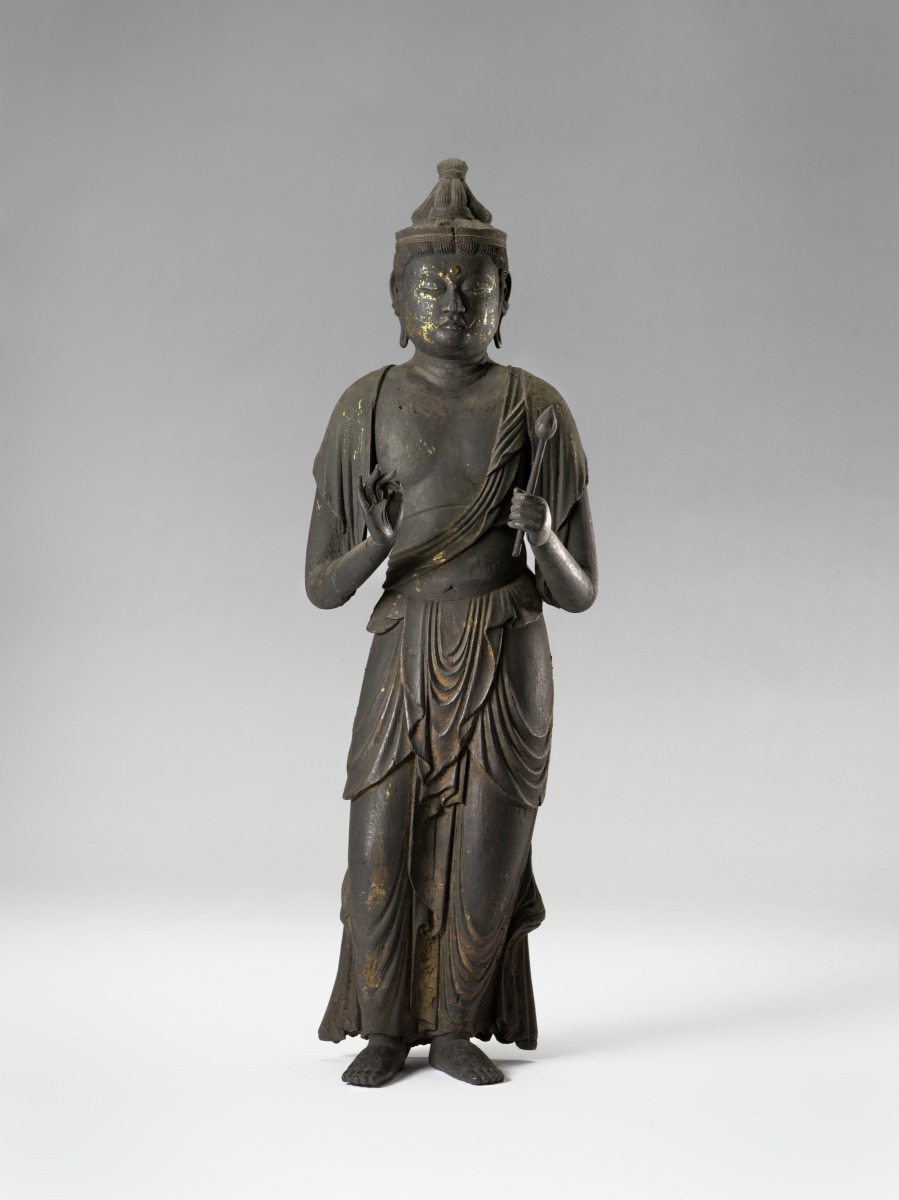
Kannon (Bodhisattva Avalokitesvara) (Translation)
聖観音菩薩立像 鎌倉時代 木造彫眼 (Primary Title)
Sho Kannon Bosatsu (Ârya-Avalokitesvara) (Transliterated Title)
sculpture (Object Name)
Unknown (Artist)
In response to the popularity of Pure Land Buddhism, Avalokitesvara, Kannon in Japanese, became one of the most popular deities in Japan. Kannon was believed to have the ability to appear in numerous forms and to rescue all those who called upon him for aid. The rounded form, flowing robe, and facial expression of this Kannon reveal his transcendent, graceful, and compassionate nature. As the Amida triad, Kannon and Seishi, attendents of Amida Buddha often appears enshrined with the Amida Buddha. This statue reportedly came from the Todaiji, a Buddhist temple built in the 8th century in the ancient capital of Nara.
Kamakura period (1185-1333)
Unsigned
None
None
Arthur and Margaret Glasgow Fund
Image released via Creative Commons CC-BY-NC
Some object records are not complete and do not reflect VMFA's full and current knowledge. VMFA makes routine updates as records are reviewed and enhanced.

